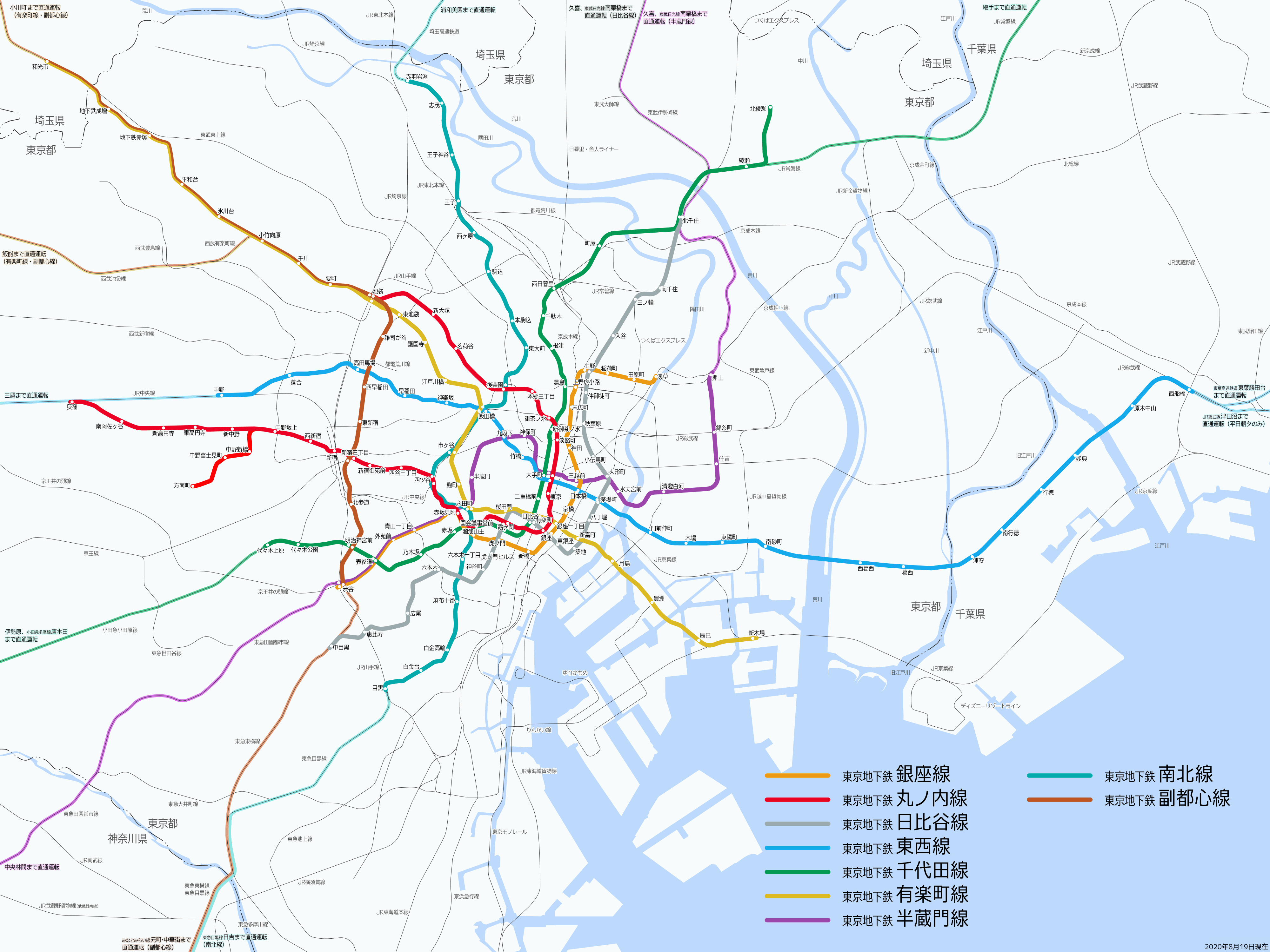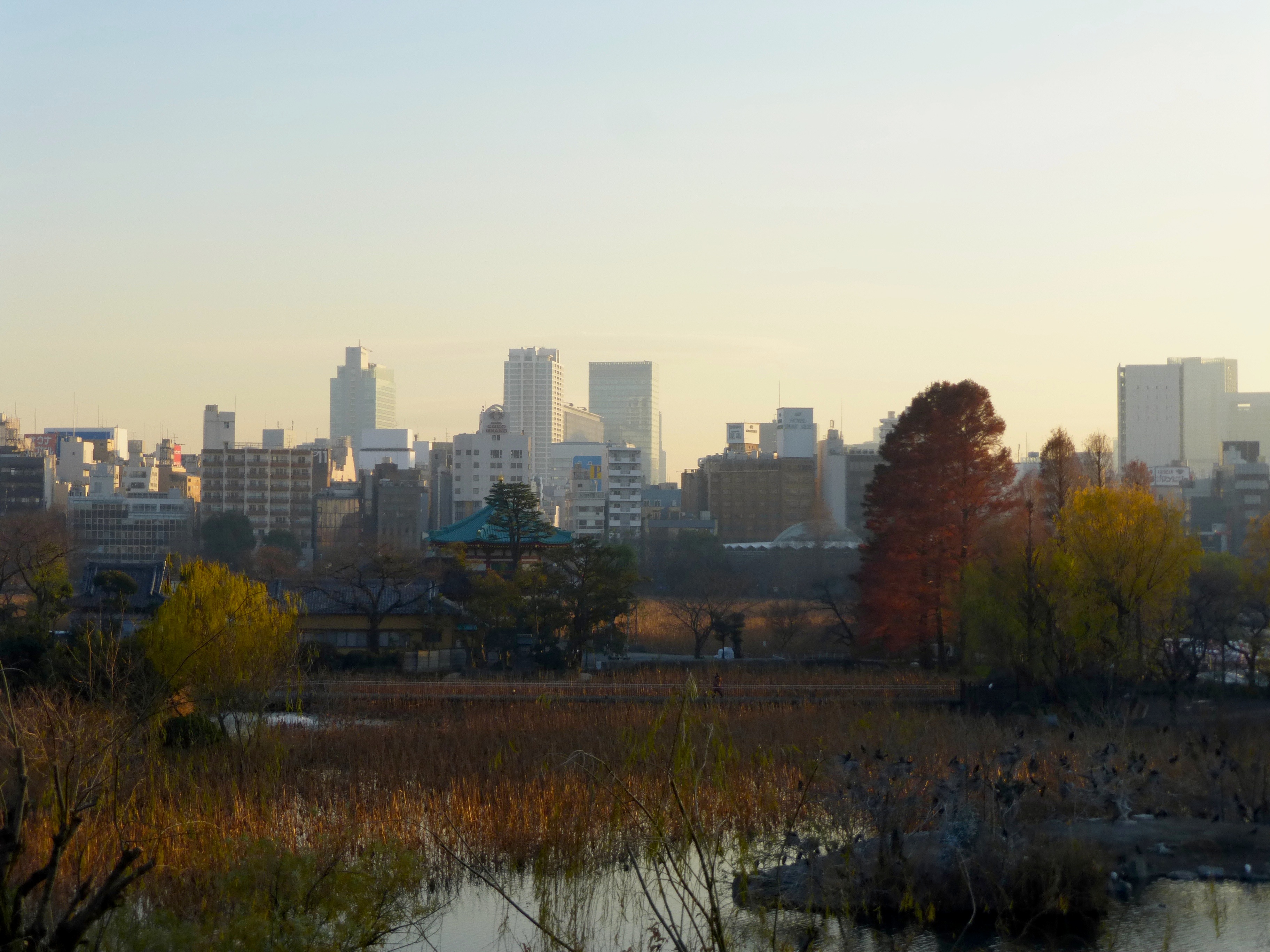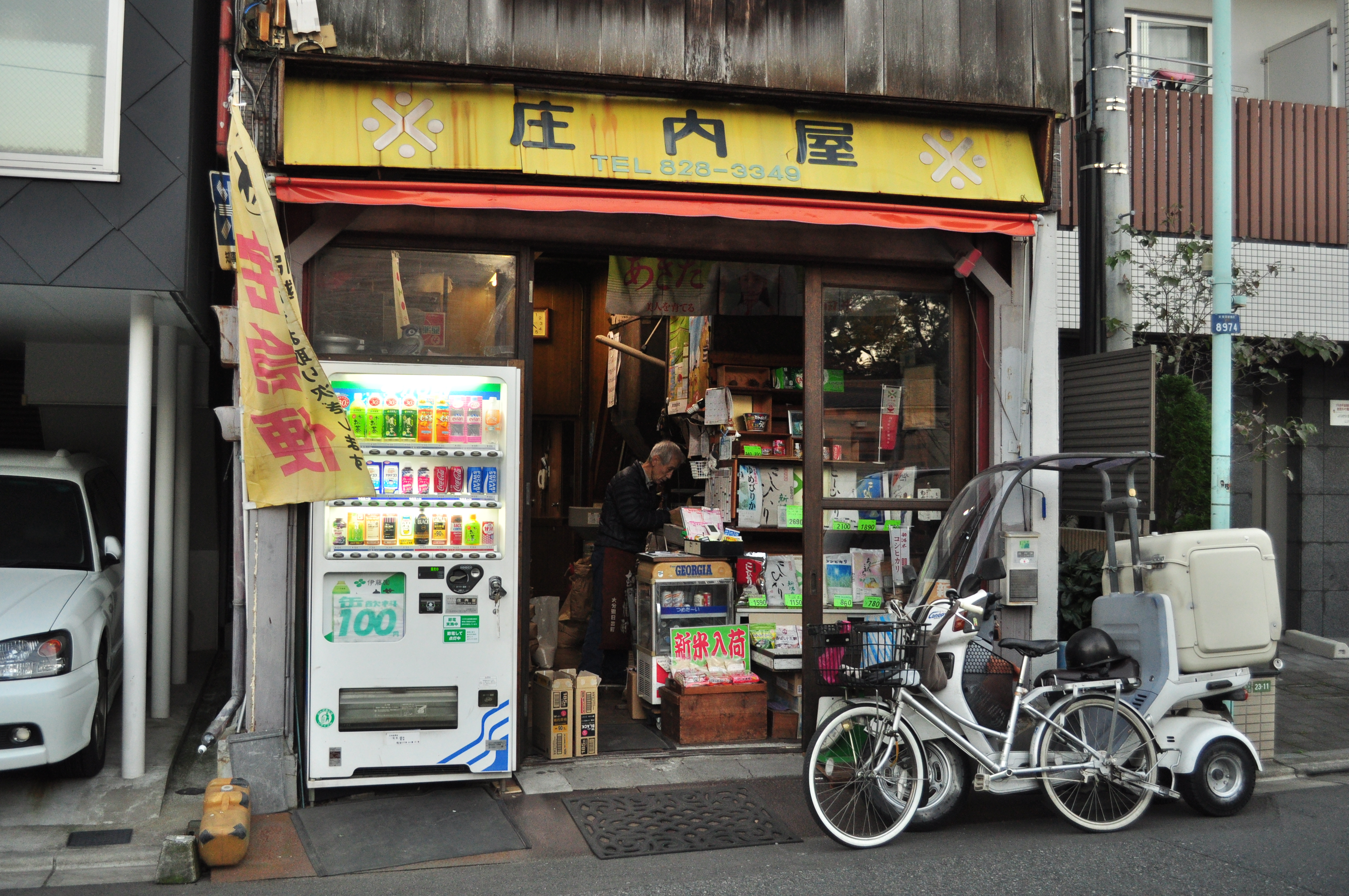|
Nezu Station
Nezu Station (根津駅 ''Nezu-eki'') is a metro station on the Tokyo Metro Chiyoda Line located in Bunkyo, Tokyo. Station layout The station is reached by stairways from the street to the ticket wickets. The station consists of two side platforms located on separate levels. Platforms History Nezu Station opened for revenue service on 20 December 1969. The station facilities were inherited by Tokyo Metro after the privatization of the Teito Rapid Transit Authority (TRTA) in 2004. Surrounding area * Nezu Shrine * Yanaka shopping area and Yanaka Cemetery * Shinobazu Pond and Ueno Park * University of Tokyo , abbreviated as or UTokyo, is a public research university located in Bunkyō, Tokyo, Japan. Established in 1877, the university was the first Imperial University and is currently a Top Type university of the Top Global University Project by ... * Sawanoya Ryokan References External links Tokyo Metro Nezu Station {{Coord, 35.717376, 139.765744, type:rai ... [...More Info...] [...Related Items...] OR: [Wikipedia] [Google] [Baidu] |
Tokyo Metro
The is a major rapid transit system in Tokyo, Japan, operated by the Tokyo Metro Co. With an average daily ridership of 6.84 million passengers, the Tokyo Metro is the larger of the two subway operators in the city; the other being the Toei Subway, with 2.85 million average daily rides. Organization Tokyo Metro is operated by , a joint-stock company jointly owned by the Government of Japan and the Tokyo Metropolitan Government. The company, founded as a part of then-Prime Minister Junichiro Koizumi's policy of converting statutory corporations into joint-stock companies, replaced the , commonly known as Eidan or TRTA, on April 1, 2004. TRTA was administered by the Ministry of Land, Infrastructure and Transport, and jointly funded by the national and metropolitan governments. It was formed in 1941 as a part-nationalization of the Tokyo Underground Railway and Tokyo Rapid Railway (now both form the Tokyo Metro Ginza Line), although its oldest lines date back to 1927 wi ... [...More Info...] [...Related Items...] OR: [Wikipedia] [Google] [Baidu] |
Railway Stations In Japan Opened In 1969
Rail transport (also known as train transport) is a means of transport that transfers passengers and goods on wheeled vehicles running on rails, which are incorporated in tracks. In contrast to road transport, where the vehicles run on a prepared flat surface, rail vehicles (rolling stock) are directionally guided by the tracks on which they run. Tracks usually consist of steel rails, installed on sleepers (ties) set in ballast, on which the rolling stock, usually fitted with metal wheels, moves. Other variations are also possible, such as "slab track", in which the rails are fastened to a concrete foundation resting on a prepared subsurface. Rolling stock in a rail transport system generally encounters lower frictional resistance than rubber-tyred road vehicles, so passenger and freight cars (carriages and wagons) can be coupled into longer trains. The operation is carried out by a railway company, providing transport between train stations or freight customer facilit ... [...More Info...] [...Related Items...] OR: [Wikipedia] [Google] [Baidu] |
University Of Tokyo
, abbreviated as or UTokyo, is a public research university located in Bunkyō, Tokyo, Japan. Established in 1877, the university was the first Imperial University and is currently a Top Type university of the Top Global University Project by the Japanese government. UTokyo has 10 faculties, 15 graduate schools and enrolls about 30,000 students, about 4,200 of whom are international students. In particular, the number of privately funded international students, who account for more than 80%, has increased 1.75 times in the 10 years since 2010, and the university is focusing on supporting international students. Its five campuses are in Hongō, Komaba, Kashiwa, Shirokane and Nakano. It is considered to be the most selective and prestigious university in Japan. As of 2021, University of Tokyo's alumni, faculty members and researchers include seventeen prime ministers, 18 Nobel Prize laureates, four Pritzker Prize laureates, five astronauts, and a Fields Medalist. Hi ... [...More Info...] [...Related Items...] OR: [Wikipedia] [Google] [Baidu] |
Shinobazu Pond
The is a pond within Ueno Park (a spacious public park located in the Ueno section of Taitō, Tokyo, Japan), and a historically prominent Shitamachi feature often appearing in history and works of art. The park occupies the site of the former Kan'ei-ji, a temple closely associated with the Tokugawa ''shōguns'', who had built it to guard Edo Castle against the northeast, a direction believed to be unlucky by traditional geomancy. The temple was destroyed during the Boshin War. The pond, although modified many times and even once drained, is natural. Position and Dimensions Situated in the south of Ueno Park, the pond is divided in three sections (see map), one called because of the plants that during the summer completely cover its surface, one called from the rental boats it hosts, and the third called , which lies within the limits of the Ueno Zoo and takes its name from the birds that inhabit it. The pond has a circumference of about 2 km and a surface of about 1 ... [...More Info...] [...Related Items...] OR: [Wikipedia] [Google] [Baidu] |
Yanaka Cemetery
is a large cemetery located north of Ueno in Yanaka 7-chome, Taito, Tokyo, Japan. The Yanaka sector of Taito is one of the few Tokyo neighborhoods in which the old Shitamachi atmosphere can still be felt. The cemetery is famous for its beautiful cherry blossoms that in April completely cover its paths, and for that reason that its central street is often called Cherry-blossom Avenue. Description Although renamed over 85 years ago, the cemetery is still often called by its old official name, , and not ''Yanaka Reien''. It has an area of over 100 thousand square meters and hosts about 7 thousand graves. The cemetery has its own police station and a small walled enclosure dedicated to the Tokugawa clan, family of the 15 Tokugawa ''shōguns'' of Japan, which however is closed to the public and must be peeked at through double barred gates. The last ''shōgun'' Tokugawa Yoshinobu, also known as Keiki, rests here. The cemetery used to be part of a Buddhist temple called , and its ... [...More Info...] [...Related Items...] OR: [Wikipedia] [Google] [Baidu] |
Yanaka, Tokyo
Yanaka (谷中) is a sector of Taito, Tokyo, Japan and, along with nearby Nezu and Sendagi neighborhoods in Bunkyo ward, is one of the few Tokyo neighborhoods in which the old Shitamachi atmosphere can still be felt. Located north of Ueno, Yanaka includes the large Yanaka Cemetery, which takes up most of Yanaka 7-chome. The Daimyo Clock Museum is also in Yanaka. There are around 70 privately owned small stores in Yanaka Education Taito City Board of Education operates public elementary and junior high schools. Yanaka 2-7-chome and portions of 1-chome are zoned to Yanaka Elementary School (谷中小学校). Portions of Yanaka 1-chome The Japanese addressing system is used to identify a specific location in Japan. When written in Japanese characters, addresses start with the largest geographical entity and proceed to the most specific one. When written in Latin characters, ... are zoned to Shinobu Gaoka Elementary School ( 忍岡小学校). All of Yanaka (1-7-chome) ... [...More Info...] [...Related Items...] OR: [Wikipedia] [Google] [Baidu] |
Nezu Shrine
is a Shinto shrine located in the Bunkyō ward of Tokyo, Japan. Established in 1705, it is one of the oldest places of worship in the city, and several of the buildings on the shrine grounds have been designated as Important Cultural Property. It was built in the Ishi-no-ma-zukuri style of Shinto architecture, following the Tōshō-gū shrine in Nikkō. It is famous for its Azalea Festival (Tsutsuji Matsuri) which is held on its grounds from early April until early May, and it has been described as "Tokyo’s most beautiful shrine" and as one of the city's "most spectacular spring scenes". It is one of the . History According to the legend, the Nezu shrine was founded in Sendagi, just north of the current location, in the 1st century by Yamato Takeru (also known as Prince Ōsu), the son of Emperor Keikō. The chief deity of the shrine was Susanoo-no-Mikoto, the kami of the sea and storms. In 1705 the shrine was relocated to Nezu by Tokugawa Tsunayoshi (1646–1709) ... [...More Info...] [...Related Items...] OR: [Wikipedia] [Google] [Baidu] |
Jōban Line
The Jōban Line ( ja, 常磐線, ) is a railway line in Japan operated by the East Japan Railway Company (JR East). The line officially begins at Nippori Station in Arakawa, Tokyo before the line officially ends at Iwanuma Station in Iwanuma, Miyagi. However, following the opening of the Ueno–Tokyo Line, Jōban Line train services originate at or ; likewise, Jōban Line trains continue past Iwanuma onto the Tōhoku Main Line tracks to . The line approximately parallels the Pacific coasts of Chiba, Ibaraki, and Fukushima Prefectures. The name "Jōban" is derived from the names of the former provinces of Hitachi ( ja, 常陸, links=no), and Iwaki ( ja, 磐城, links=no), which are connected by the line to reach Tokyo. The section of the Jōban Line between and , which extends through the exclusion zone surrounding the Fukushima Daiichi nuclear meltdown, closed in the wake of the 2011 Tōhoku earthquake and tsunami and Fukushima Daiichi nuclear disaster. After some ... [...More Info...] [...Related Items...] OR: [Wikipedia] [Google] [Baidu] |
Tokyo
Tokyo (; ja, 東京, , ), officially the Tokyo Metropolis ( ja, 東京都, label=none, ), is the capital and List of cities in Japan, largest city of Japan. Formerly known as Edo, its metropolitan area () is the most populous in the world, with an estimated 37.468 million residents ; the city proper has a population of 13.99 million people. Located at the head of Tokyo Bay, the prefecture forms part of the Kantō region on the central coast of Honshu, Japan's largest island. Tokyo serves as Economy of Japan, Japan's economic center and is the seat of both the Government of Japan, Japanese government and the Emperor of Japan. Originally a fishing village named Edo, the city became politically prominent in 1603, when it became the seat of the Tokugawa shogunate. By the mid-18th century, Edo was one of the most populous cities in the world with a population of over one million people. Following the Meiji Restoration of 1868, the imperial capital in Kyoto was mov ... [...More Info...] [...Related Items...] OR: [Wikipedia] [Google] [Baidu] |
Odakyu Odawara Line
, commonly known as Odakyū, is a major railway company based in Tokyo, Japan, best known for its ''Romancecar'' series of limited express trains from Tokyo to Odawara, Enoshima, Tama New Town, and Hakone. The Odakyu Electric Railway Company forms the core of the Odakyu Group, which comprises 101 companies (as of July 14, 2017) and includes the Enoshima Electric Railway, Hakone Tozan Railway, , , and hotel. It is listed on the Tokyo Stock Exchange and is a constituent of the Nikkei 225. History Pre-WWII The 83 km line from Shinjuku to Odawara opened for service on April 1, 1927. Unlike the Odawara line, rarely were pre-World War II Japanese private railways constructed with double-track and fully electrified from the first day of operation. Two years later, April 1, 1929, the Enoshima Line was added. The original full name of the railroad was , but this was often shortened to . The abbreviation ''Odakyu'' was made popular by the title song of the 1929 movie '' Tōkyō k ... [...More Info...] [...Related Items...] OR: [Wikipedia] [Google] [Baidu] |




